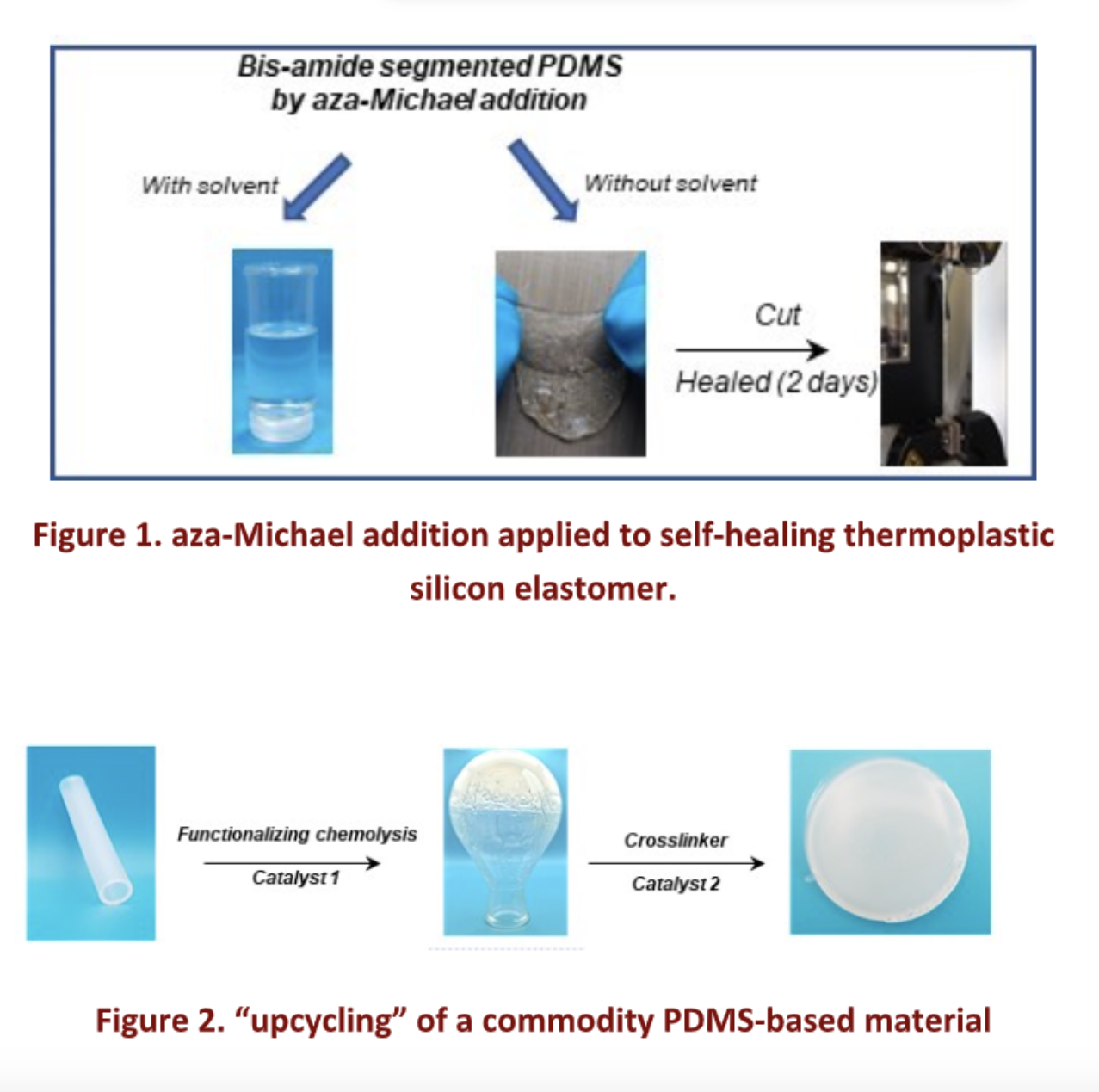Chemical strategies to favor repairing, redesigning and recycling silicone-based materials
Daniel Portinha, Lucile Fauvre, Antoine Forens, Aurélie Boulègue-Mondière, Nicolas Durand, François Ganachaud, Etienne Fleury

Polymeric materials in general and silicone, in particular the ones based on poly(dimethyl siloxane) PDMS, have revolutionized key sectors such as healthcare, construction, electronics… For most of these applications where they are used as structural materials, these polymers need to be chemically crosslinked and mostly involve irreversible covalent bonds. This ensures their durability along their functional lifetime, but appears problematic for the environment at their end-of-life. In order to reduce the global impact at that moment when they achieved their duty, it is urgent to develop valorization processes others that incineration, in particular in the context of circular economy that should favor repairing, redesigning and recycling materials with appropriate properties. To illustrate this, different chemical strategies can be thought of. One can think about designing physically-crosslinked silicones that can develop some enhanced properties such as inherent self-healing at service temperature (Fig.1) while showing some novel characteristics for crosslinked materials that are generally observed for thermoplastics (solubility for example). For that purpose, the potential of the aza- Michael reaction will in particular be emphasized, as a simple and accessible addition reaction that can be performed in mild conditions and that allow designing specific structures thanks to the availability of a multitude of Michael acceptors and Michael donors [1-4].
Another paradigm consists in converting “classical” PDMS products into functional oligomers that can be reused in novel elastomeric formulations. This chemical “upcycling” can be applied to different types of polymers (linear chains or slightly crosslinked “gels”) as well as PDMS materials (PDMS-elastomers including fillers) such that a “waste” (off-spec, ready to be thrown) may then be converted into market value chemicals [5] (Fig.2). Some results obtained recently in these 2 fields in our group will be discussed.

References
- A. Genest, D. Portinha, E. Fleury, F. Ganachaud Prog. Polym. Sci. 2017, 8, 61.
- A. Genest, S. Binauld, E. Pouget, F. Ganachaud, E. Fleury, D. Portinha Polymer Chem. 2017, 3, 624.
- A. Genest, D. Portinha, E. Pouget, K. Lamnawar, F. Ganachaud, E. Fleury Macromol. Rapid Commun. 2021, 42, 2000372.
- L. Fauvre, E. Fleury, F. Ganachaud, D. Portinha ACS Appl. Polym. Mater. 2023, 5, 1229.
- A. Forens, A. Boulègue-Mondière, N. Durand, D. Portinha, E, Fleury, in preparation Acknowledgments All the authors acknowledge financial support from ANR (Arcade Project) and the Region AURA and BPi France (REPOS Project)